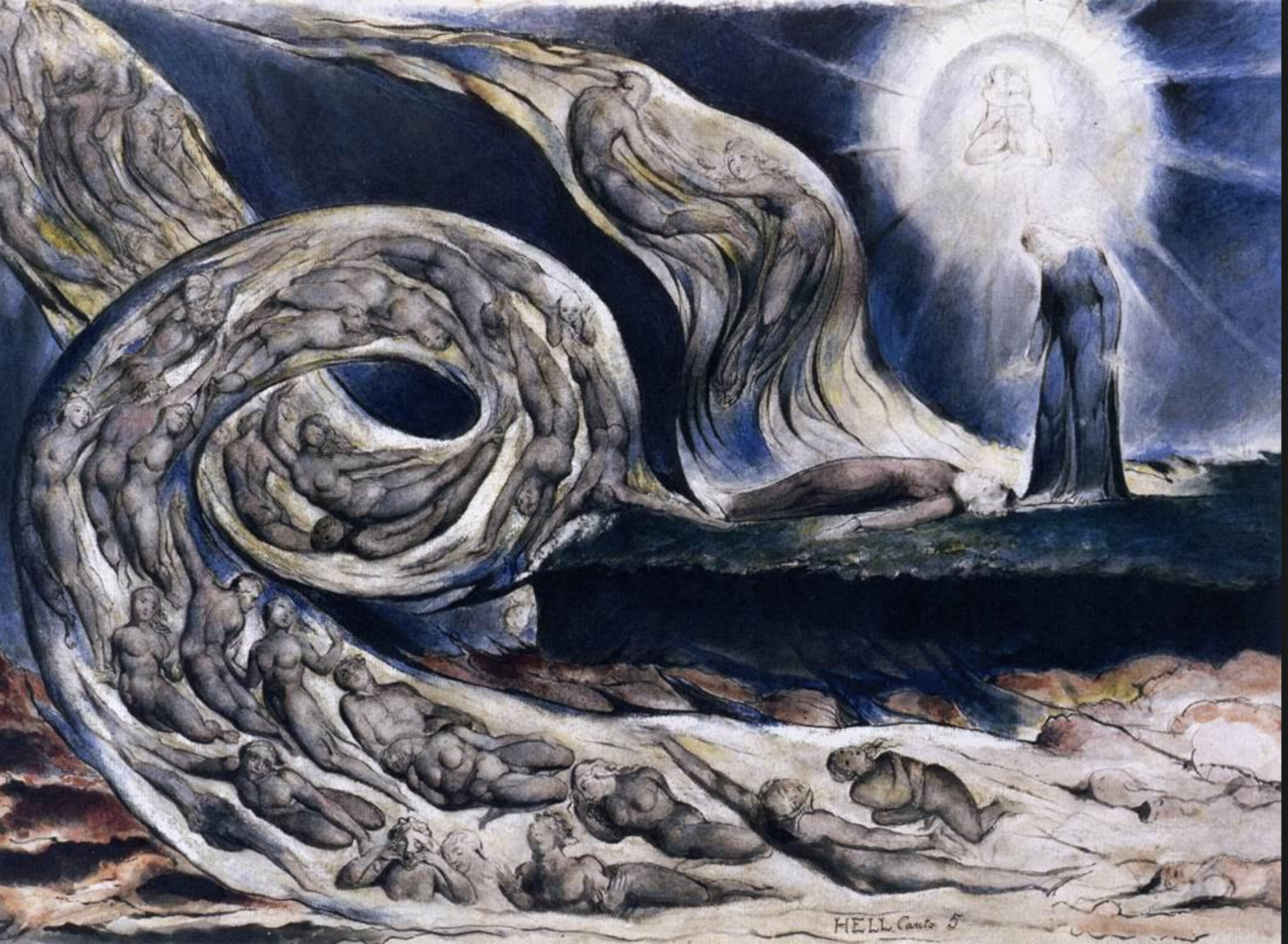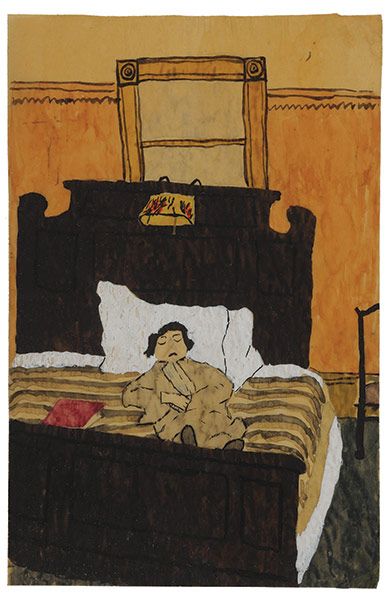Over the past couple of years, I have been filming performative events and making videos at a distance – through webcams, FaceTime and Skype. One particular piece recreated William Blake’s ‘Circle of the Lustful’ illustration for Dante’s ‘Divine Comedy: Inferno’, in the form of a tableau vivant. Performers re-enacted the illustration, remaining still for a long time. This was experienced by a live public in one city and simultaneously transmitted through a series of webcams to screens in another city, with another live audience present. These reactivations from art history relate to a long-term interest in the relationship between painting and stasis, the frame and the moving image; in this case muddling Blake’s vision of London during the Industrial Revolution into our present time, somehow seeing the city and bodies as a kind of hallucination through the screen, much like we see everything in these Covid-19 days.
Our isolation at home in these times has got me thinking about relationships to the screen, distance, scale and intimacy. At this moment, when we are forced to be at home, the outside becomes a kind of abstract statistic of bodies, graphs and curves which, alarming as it is disturbing, inevitably brings us to reconfigure our understanding of our own space, our own circumstances and interiority. If there is one sense we are denied in this moment it is touch. More than ever the screen has become a sort of trans-intimate membrane or ‘skin’ of optical densities through which we project ourselves and receive information from the outside. This surface has activated new relations and been stretched to provide new ways of communicating.
I understand the surface-screen as a zone where we encounter and play with different scales and sensorial experiences, without any localisation. Enough said of the plethora of fractured but joined Zoom choirs, orchestras, operas, even ‘house’ parties, where this reality is also complicit with the virtual, negotiating a new proximity. Distance in itself has gone all wonky, compressed in fibre optics, sneaking into our personal space. The last thing I want to do is ‘The Zoom’ project right now – real life has outdone any art piece – but I do think this burst of home-spun improvisation is suggesting an aspect of intimacy that has nothing to do with physical closeness, but rather this moment has somehow exposed the screen not so much as a place or window (as a painter might consider it) but as a permeable zone, in which we invite each other back and forth through inner and outer worlds. Like it or not the screen is now inseparable from our lived reality and we are having to learn to be together from afar. This moment has accelerated our already fast-changing negotiation between the real and the apparent, bending and stretching our sense of distance and scale. In my own work I can feel it coming, while not yet sure what that future form or image might be.
– Melanie Smith, May 2020
Melanie Smith’s film Maria Elena was presented as an installation at CAST in the summer of 2019, following a screening in which it was paired with an earlier landscape-based film, Fordlandia (2014). Trained as a painter, she explores the extended field of painting and its relation to the moving image. Her work reflects on today’s industrial society, pointing towards the precariousness and violence occurring on city outskirts. Melanie Smith lived for 29 years in Mexico City, but is now living in London. Recent exhibitions include Liverpool Biennial and MACBA, Barcelona, both 2018.
melaniesmith.net



